LUCIDA

LUCIDA
[noun]
the brightest star in a constellation.
Etymology: from the full phrase in Latin stella lūcida meaning “bright star”. Lucida can be traced to the Latin verb lūcēre, "to shine,“ from lux, "light.”
[Tim Barton - Amber of the Void]
More Posts from Fillthevoid-with-space and Others
I love this comic a lot! You can read it all online to make sure you want to buy it, and then you should buy it because it’s extremely excellent. It’s about preservation in space and also love and found families! And it’s absolutely beautiful. I met Tillie while she was in my town signing her comic Spinning (also excellent) and she drew one of the fish spaceships for me and she was so kind even though I am terrible at smalltalk. Check her comic out!

OH MY! Here’s the cover for ON A SUNBEAM the graphic novel. Coming out this fall!!!!

The inner planets and the outer planets all look like stars from Earth. They are strange stars that move in strange ways, but their appearance depends on how they relate to observers on Earth. They are also affected by their position in relation to the Sun. Planets experience eclipses as well when the Sun, Earth, and planet are all aligned; in the inner planets, this is called a transit, and this has been a source of vast information about the solar system and the planets’ places in that system. In the outer planets, this eclipsing is called opposition. You get to hear about both in this week’s podcast!
Below the cut, I have the glossary, transcript, timeline of astronomers, sources, and music credits. I take topic suggestions from Tumblr messages, or you can tweet at me on Twitter at @HDandtheVoid, or you can ask me to my face if you know me. Please subscribe on iTunes, rate my podcast and maybe review it, and tell friends if you think they’d like to hear it!
(My thoughts on the next episode are Chuck Yeager, Edmond Halley, Stephen Hawking and his theories, or famous comets. The next episode will go up later in June!)
Glossary
aphelion - a planet’s most distant position from the Sun
black drop effect - an optical illusion where a planet nearing the edge of the Sun appears to be connected to the Sun’s edge by a black teardrop.
conjunction - when the Earth, Sun, and another planet in the solar system are aligned so that Earth and the planet are on opposite sides of the Sun.
node - the point where another planet’s orbit crosses the plane of Earth’s orbit. The planets’ orbits are tilted at slightly different angles from each other; for example, Mercury’s orbit is inclined 7 degrees compared to Earth’s orbit. Because Mercury orbits the Sun once every 88 days, it crosses Earth’s orbit every 44 days at these nodes.
opposition - when one of the outer planets crosses the plane of Earth’s orbit opposite the Sun.
perihelion - a planet’s closest position to the Sun
retrograde - the apparent motion of a planet in a direction opposite to that of other bodies within its system, as observed from a particular vantage point.
syzygy - the straight line between three celestial bodies, usually the Sun to the Earth to another planetary body.
transit - when one of the inner planets crosses between the plane of Earth’s orbit and the Sun.
Script/Transcript
Timeline
Bernhard Walther, German (1430-1504)
Johannes Regiomontanus, German (1436-1476)
Willibald Pirckheimer, German (1470-1530)
Nicolaus Copernicus, Polish (1473-1543)
Georg Rheticus, Austrian (1514-1574)
Johannes Kepler, German (1571-1630)
Pierre Gassendi, French (1592-1655)
Johannes Hevelius, Polish (1611-1687)
Jeremiah Horrocks, English (1618-1641)
Edmond Halley, English (1656-1742)
Leonhard Euler, Swiss (1707-1783)
Alexandre Guy Pingré, French (1711-1796)
César-François Cassini de Thury, French (1714-1784)
Maximilian Hell, Hungarian (1720-1792)
Jean-Baptiste Chappe d’Auteroche, French (1722-1769)
James Cook, English (1728-1779)
Charles Mason, English (1728-1786)
Jeremiah Dixon, English (1733-1779)
János Sajnovics, Hungarian (1733-1785)
Thomas Hornsby, English (1733-1810)
Charles Green, English (1734-1771)
Joseph Jérôme Lefrançois de Lalande, French (1732-1807)
Jean Guillaume Wallot, French/German (1743-1794)
Christian VII of Denmark, Danish (1749-1808)
Sources
Mercury Solar Transit (image) via NASA
Mercury Transit of the Sun: Why Is It So Rare? via Space.com (May 2016)
The 2016 Transit of Mercury via NASA
Before the Transit of Mercury: forgotten forerunners of an astronomical revolution via The Guardian (May 2016)
Catalog of Venus Transits via NASA’s Fred Espenak
Mars Opposition via NASA
Mars brighter in 2018 than since 2003 via EarthSky (May 2018)
Opposition of Superior Planets via Hong Kong Observatory
Saturn at Opposition via NASA
Earth between sun and Saturn late June via EarthSky (Jun 2018 [not possible because I’m releasing this podcast in May 2018 but okay])
Uranus at opposition via EarthSky (Oct 2017)
Earth passing between Neptune and sun via EarthSky (Sept 2018 [not possible because I’m releasing this podcast in May 2018 but okay])
Anderson, Mark. The Day the World Discovered the Sun. Da Capo Press: Philadelphia, 2012.
“Visionaries like Edmund Halley had in 1716, for instance, argued that the Venus transit could enable science to trace out a map of the solar system accurate to 99.8 percent or better” (191).
Wulf, Andrea. Chasing Venus: The Race to Measure the Heavens. Alfred A. Knopf: New York, 2012.
Intro Music: ‘Better Times Will Come’ by No Luck Club off their album Prosperity
Filler Music: ‘Cannonballs’ by Hey Marseilles off their album To Travels and Trunks.
Outro Music: ‘Fields of Russia’ by Mutefish off their album On Draught
One more reblog! Seriously, hit me up by Friday, April 14th if you have strong opinions about what I delve into next, research-wise. I’m ready to get back to it. You can tweet me (@HDandtheVoid) or comment here on tumblr maybe? I have anonymous on, no worries. :)

The first episode is here! I have never done this before and right now, I’m planning to put up a podcast every two weeks.
Below the cut is some elaboration on the episode itself, including my sources, music credits, a glossary, and a transcript (not an exact record of this episode, but it’s the script I was working with and it’s both conversational and also a little less rambling than what I actually said). I’m on Twitter now, too: @HDandtheVoid. I don’t know what I’ll put there yet except maybe fun little facts and, of course, notifications on when an episode goes up.
Let me know what you think of this episode, let me know what you think I should research next*, tell me a fun space fact… anything’s helpful at this point!
*(Move fast if you feel strongly about what I research next, though, cuz I have to get it done by April 24th—I don’t mention it in the podcast but this is me telling you now so I am held accountable; April 24th is the next podcast.)
Keep reading
New Horizons Flyover of Pluto
Using actual New Horizons data and digital elevation models of Pluto and its largest moon Charon, mission scientists have created flyover movies that offer spectacular new perspectives of the many unusual features that were discovered and which have reshaped our views of the Pluto system – from a vantage point even closer than the spacecraft itself. This dramatic Pluto flyover begins over the highlands to the southwest of the great expanse of nitrogen ice plain informally named Sputnik Planitia. The viewer first passes over the western margin of Sputnik, where it borders the dark, cratered terrain of Cthulhu Macula, with the blocky mountain ranges located within the plains seen on the right. The tour moves north past the rugged and fractured highlands of Voyager Terra and then turns southward over Pioneer Terra – which exhibits deep and wide pits – before concluding over the bladed terrain of Tartarus Dorsa in the far east of the encounter hemisphere. Digital mapping and rendering were performed by Paul Schenk and John Blackwell of the Lunar and Planetary Institute in Houston.


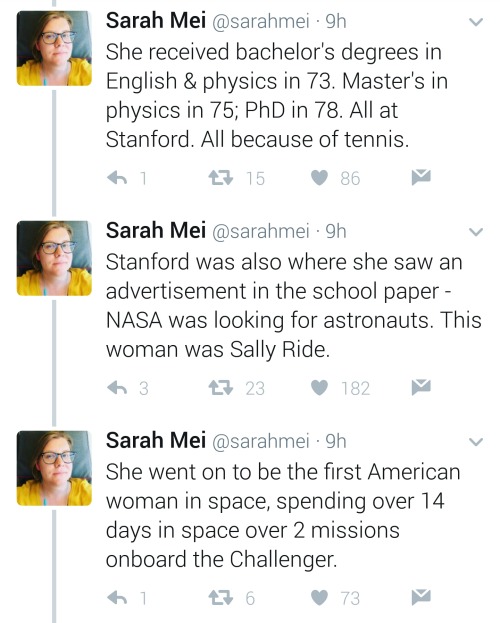

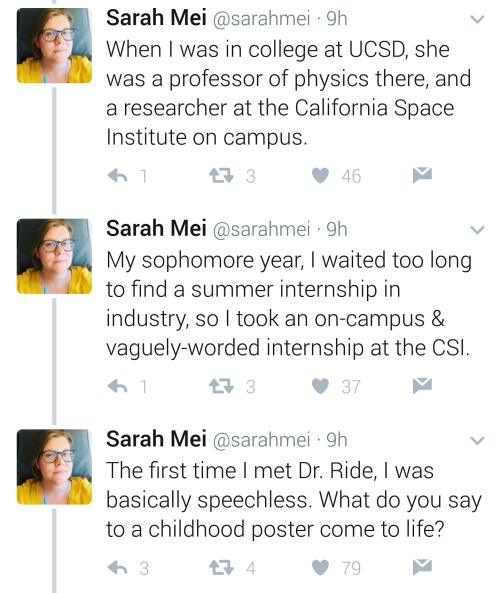
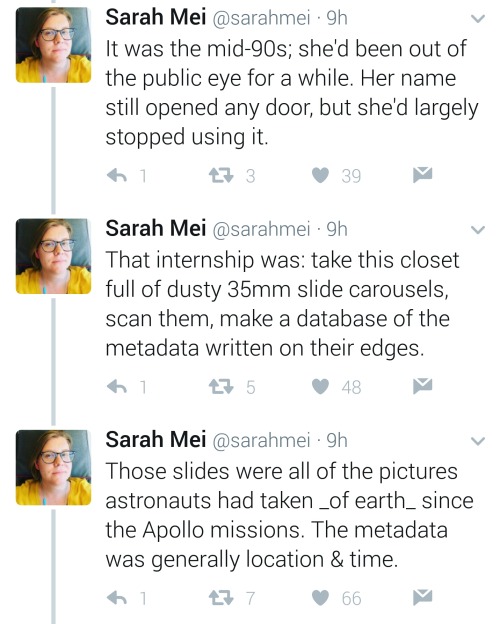
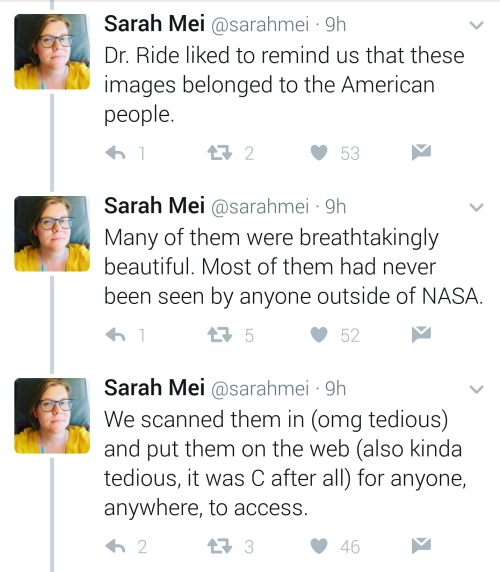
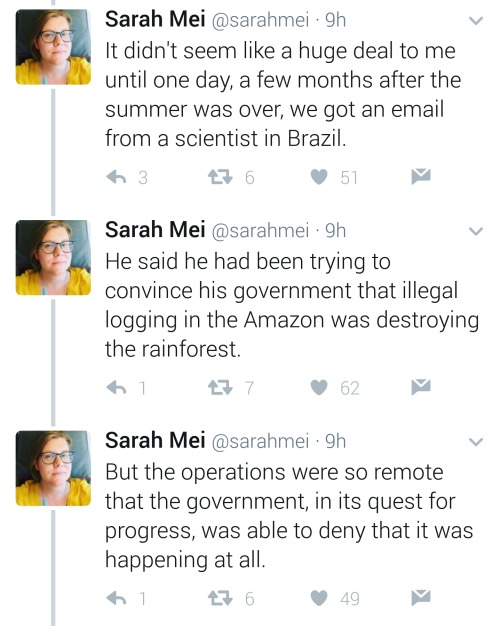
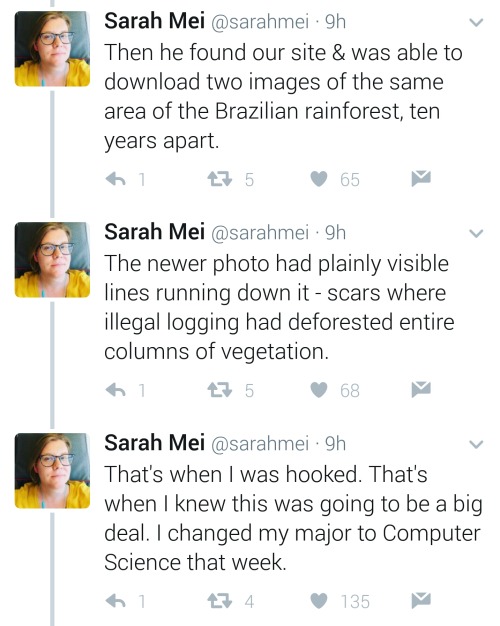

Equal opportunity benefits can be far-reaching
https://twitter.com/sarahmei/status/818682610712866817

The hardest part of determining longitude was figuring out how sailors could find their longitudinal coordinates at sea. There were a lot of methods proposed but adding a ship into the equation makes precision difficult. Learn about the Longitude Act of 1714 and how, even though this podcast loves astronomy, the astronomical method might not always be the best option.
Below the cut are my sources, music credits, a timeline of the astronomers and engineers and clockmakers I mention, a vocab list, a really cool resource that lets you drag continents all over a flattened map of Earth to compare their sizes at different latitudes, and the transcript of this episode. Let me know what you think I should research next by messaging me here, tweeting at me at @HDandtheVoid, or asking me to my face if you know me in real life. And please check out the podcast on iTunes, rate it or review it if you’d like, subscribe, and maybe tell your friends about it if you think they’d like to listen!
(My thoughts on the next episode were the Voyager golden records, space race history, the transit of Venus, or maybe something about the Moon landing. I’m loving Edmond Halley again these days, too. I’m prepping to interview a friend about her graduate-level research into the history of the universe and possibly dark matter, too. Let me know by the 20th and I’ll hopefully have the next podcast up on September 25th! If not then, I’ll push for October 2nd.)
Glossary
azimuth - a section of the horizon measured between a fixed point and the vertical circle passing through the center of an object. See example in the link.
equator - Earth’s zero line of latitude. It’s the place on Earth where the Sun is directly overhead at noon on the vernal and autumnal equinoxes.
kamal - an Arabic navigation tool consisting of a knotted string and a piece of wood. A navigator would tie a knot in the string and, by holding it in their teeth, sight the North Star along the top of the wooden piece and the horizon along the bottom. To return home, the navigator would sail north or south to bring Polaris to the altitude they had observed in their home port, then turn left or right and sail down the latitude, keeping Polaris at a constant angle. Over time, Arab navigators started tying knots at regular intervals of a fingerwidth, called an issbah, that’s about 1 degree and 36 minutes.
magnetosphere - an invisible barrier that surrounds a celestial objet. It is often generated by the movement of the liquid metal core of the object. Around a planet, it deflects high-energy, charged particles called cosmic rays that can either come from the Sun or, less often, from interstellar space.
prime meridian - Earth’s zero degree of longitude. In current maps and time zones, this invisible, imaginary line runs through London, England.
sextant - a device used to determine an observer’s location based on the observation of a known celestial object and a lot of calculation. It is still in use by sailors.
tropic of cancer - a line of latitude that marks where the Sun will be at noon on the summer solstice.
tropic of capricorn - a line of latitude that marks where the Sun will be at noon on the winter solstice.
Script/Transcript
Sources
Longitude at Sea via The Galileo Project at Rice University
Vitamin C necessity via University of Maryland Medical Center
Scurvy via NHS
Scurvy via the Encyclopedia Britannica online
An interactive map that shows how our current map distorts land masses by letting you compare different countries’ sizes.
Sobel, Dava. Longitude. Walker & Co.; New York, 1995.
“anyone living below the Equator would melt into deformity from the horrible heat” (3).
“It simply urged Parliament to welcome potential solutions from any field of science or art, put forth by individuals or groups of any nationality, and to reward success handsomely” (53).
Timeline
Claudius Ptolemy, Greek (100-170 CE)
Johannes Werner (in Latin, Ioannis Vernerus), German (1468-1522)
Tycho Brahe, Danish (1541-1601)
Galileo Galilei, Italian (1564-1642)
Giovanni Cassini (in French, Jean-Dominique Cassini), Italian/French (1625-1712)
Christiaan Huygens, Dutch (1629-1695)
Sir Isaac Newton, English (1642-1726/7)
Ole Rømer, Danish (1644-1710)
John Flamsteed, English (1646-1719)
Edmond Halley, English (1656-1742)
John Hadley, English (1682-1744)
John Harrison, English (1693-1776)
Thomas Godfrey, American (1704-1749)
John Bird, English (1709-1776)
Larcum Kendall, English (1719-1790)
James Cook, English (1728-1779)
Nevil Maskelyne, English (1732-1811)
John Arnold, English (1736-1799)
Thomas Earnshaw, English (1749-1829)
Intro Music: ‘Better Times Will Come’ by No Luck Club off their album Prosperity
Outro Music: ‘Fields of Russia’ by Mutefish off their album On Draught
I talked about Proxima Centauri last week but didn't realize it has a planet!








It’s starry scholastic month! Planet X will start it off with his first lesson: Proxima B!
http://www.space.com/33845-why-proxima-b-exoplanet-hard-to-find.html
Does all capsules drops in Kazakhstan on return after every mission?
Since the US Space Shuttle retired in 2011, we launch to and return from the Space Station with the Russian Space Agency. So yes, these capsules (the Soyuz) land in Kazakhstan (or surrounding regions). However, different spacecrafts have different reentry trajectories, depending on where they aim to land. As you might recall, the Apollo mission capsules landed in the ocean. Since Space-X and Boeing are currently building new vehicles so that we will also launch from the US again to get to the International Space Station, these spacecraft will return to the US. For example, you may have seen footage of Space-X cargo vehicles splashing down into the Pacific over the last few years. The Boeing Starliner plans to land on land instead of water. NASA is also currently building the Orion spacecraft, which will take us to destinations beyond low earth orbit (where the Space Station is), whether that be the Moon or Mars or another target. Orion will also splash down in the ocean.
-
 azula-nyx reblogged this · 3 years ago
azula-nyx reblogged this · 3 years ago -
 azula-nyx liked this · 3 years ago
azula-nyx liked this · 3 years ago -
 viiistrength liked this · 3 years ago
viiistrength liked this · 3 years ago -
 owlways-sleepy liked this · 4 years ago
owlways-sleepy liked this · 4 years ago -
 srsizzness reblogged this · 5 years ago
srsizzness reblogged this · 5 years ago -
 nobodyandheartless reblogged this · 5 years ago
nobodyandheartless reblogged this · 5 years ago -
 dan5025 reblogged this · 5 years ago
dan5025 reblogged this · 5 years ago -
 senbonzakura9 liked this · 5 years ago
senbonzakura9 liked this · 5 years ago -
 xxxshivasxxx liked this · 5 years ago
xxxshivasxxx liked this · 5 years ago -
 doorhineinspo reblogged this · 5 years ago
doorhineinspo reblogged this · 5 years ago -
 badfeelingser liked this · 6 years ago
badfeelingser liked this · 6 years ago -
 cxmilapeach liked this · 6 years ago
cxmilapeach liked this · 6 years ago -
 kingragnarok25 liked this · 6 years ago
kingragnarok25 liked this · 6 years ago -
 beyond-far-horizons reblogged this · 6 years ago
beyond-far-horizons reblogged this · 6 years ago -
 beyond-far-horizons liked this · 6 years ago
beyond-far-horizons liked this · 6 years ago -
 lightninganima liked this · 6 years ago
lightninganima liked this · 6 years ago -
 nashapixie liked this · 6 years ago
nashapixie liked this · 6 years ago -
 winxlover666 liked this · 6 years ago
winxlover666 liked this · 6 years ago -
 winxlover666 reblogged this · 6 years ago
winxlover666 reblogged this · 6 years ago -
 princess-madara reblogged this · 6 years ago
princess-madara reblogged this · 6 years ago -
 princess-madara liked this · 6 years ago
princess-madara liked this · 6 years ago -
 fireeaglespirit reblogged this · 6 years ago
fireeaglespirit reblogged this · 6 years ago -
 zombie96lover liked this · 6 years ago
zombie96lover liked this · 6 years ago -
 kingme1002 liked this · 6 years ago
kingme1002 liked this · 6 years ago -
 bluedonutpizzaegg-blog liked this · 6 years ago
bluedonutpizzaegg-blog liked this · 6 years ago -
 musicalmotivation-blog reblogged this · 6 years ago
musicalmotivation-blog reblogged this · 6 years ago -
 musicalmotivation-blog liked this · 6 years ago
musicalmotivation-blog liked this · 6 years ago -
 cute-anonyme liked this · 6 years ago
cute-anonyme liked this · 6 years ago -
 tiffanylovesava2014 liked this · 6 years ago
tiffanylovesava2014 liked this · 6 years ago -
 xxmimirxx liked this · 6 years ago
xxmimirxx liked this · 6 years ago -
 tonybalogne liked this · 6 years ago
tonybalogne liked this · 6 years ago -
 grasscuttingsword reblogged this · 6 years ago
grasscuttingsword reblogged this · 6 years ago -
 egondoris liked this · 6 years ago
egondoris liked this · 6 years ago -
 goron-king-darunia reblogged this · 6 years ago
goron-king-darunia reblogged this · 6 years ago -
 kaileyerin00 liked this · 6 years ago
kaileyerin00 liked this · 6 years ago -
 angelfloresguerra liked this · 6 years ago
angelfloresguerra liked this · 6 years ago -
 atomic-apricot liked this · 6 years ago
atomic-apricot liked this · 6 years ago -
 moonmarionette reblogged this · 7 years ago
moonmarionette reblogged this · 7 years ago -
 moonmarionette liked this · 7 years ago
moonmarionette liked this · 7 years ago -
 lordsam616 liked this · 7 years ago
lordsam616 liked this · 7 years ago
A podcast project to fill the space in my heart and my time that used to be filled with academic research. In 2018, that space gets filled with... MORE SPACE! Cheerfully researched, painstakingly edited, informal as hell, definitely worth everyone's time.
243 posts

